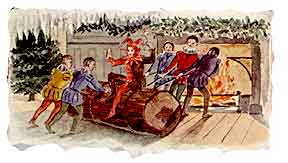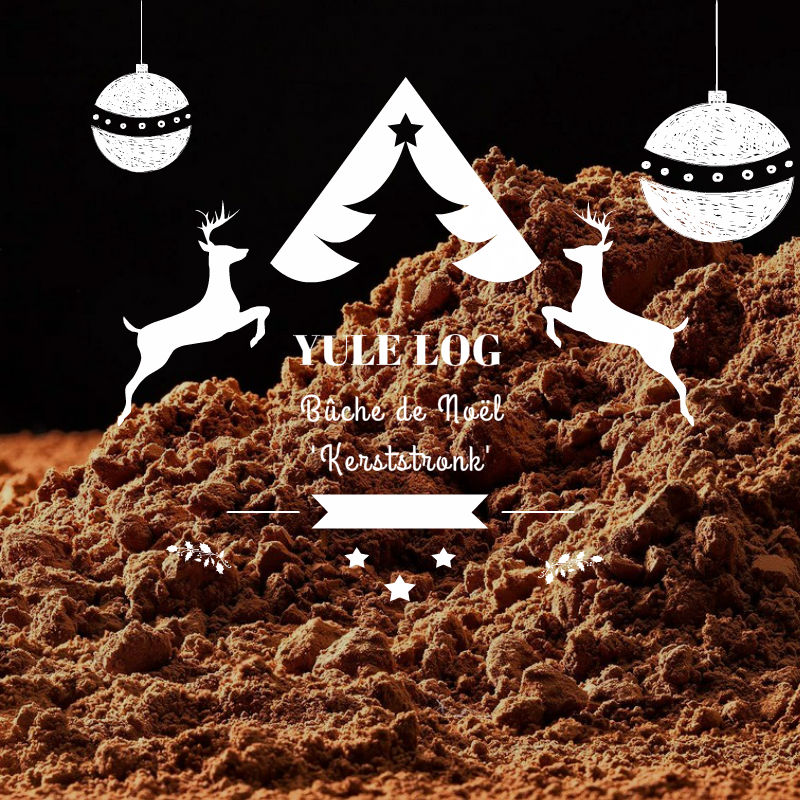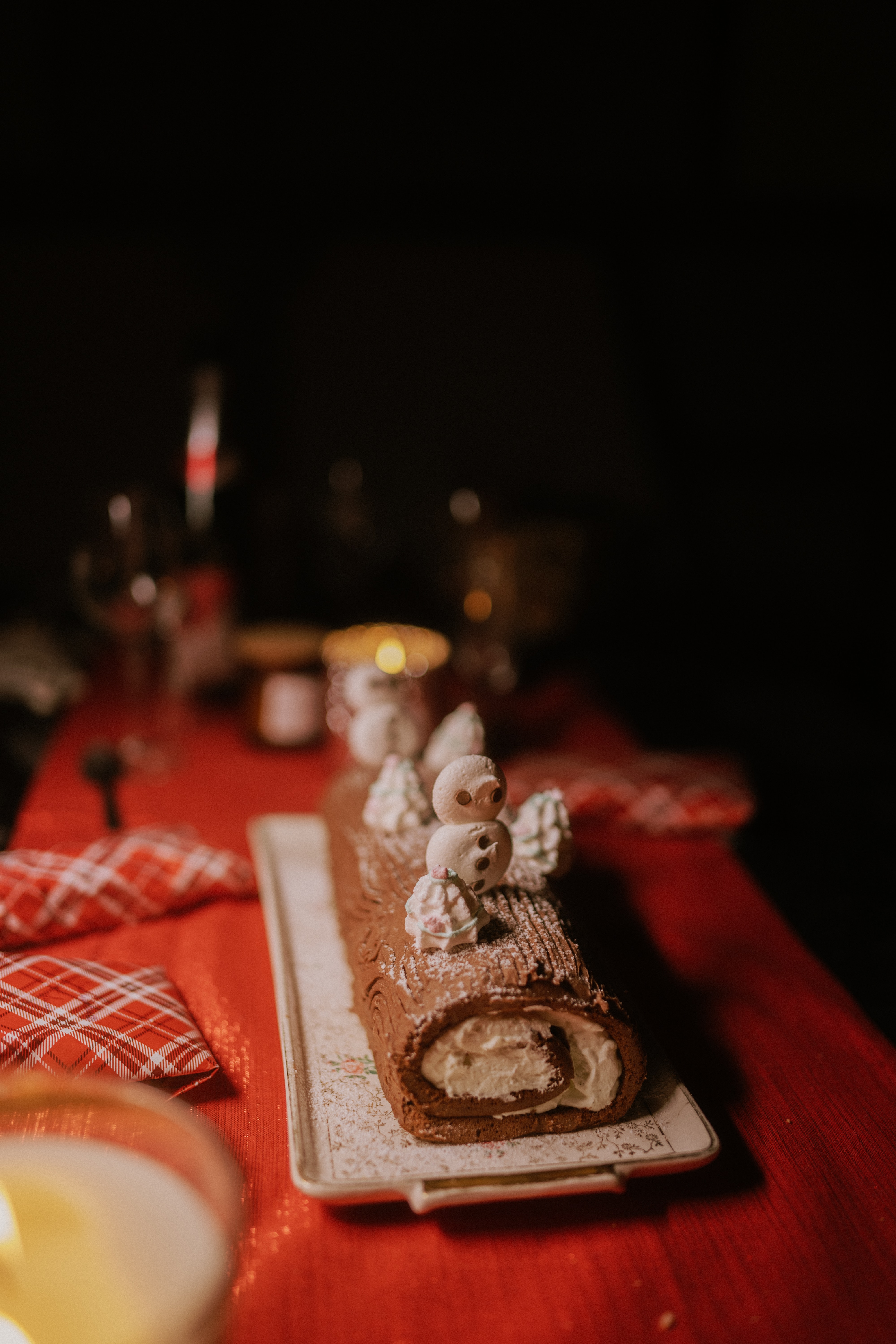Unwrapping the Yule Log Tradition
The Yule log's origins can be traced to Nordic and European traditions, specifically the old name for the Winter Solstice festivals – Yule. This ancient practice held that a special log, known as the Yule log, was ceremoniously lit on Christmas Eve and kept burning for the twelve nights of Christmas, leading up to Twelfth Night. This custom, woven into the fabric of holiday festivities, was much more than a sou
rce of warmth; it was a symbol of hope, renewal, and the turning of the seasons.
A Log of Symbolism and Belief
In the heart of medieval Europe, the Yule log played a role in both pagan and Christian beliefs. Celts believed that as the sun seemingly stood still during the twelve days at the end of December, keeping the Yule log aflame would persuade the sun to move again, lengthening the days and heralding the return of spring. For Christians, the Yule log took on a symbolic role, representing the stable's warmth where the Infant Christ was born.

Yule Log Rituals Around the World
The Yule log's symbolism is weaved into diverse cultural practices. In England, oak is the wood of choice for the Yule log, while Scotland prefers birch. In France, cherry wood is used, and the log is even sprinkled with wine before burning, filling the air with a delightful aroma. In Devon and Somerset, a tradition involving a large bunch of ash twigs stems from a local legend about Joseph, Mary, and Jesus seeking warmth.
A Modern Twist: The Chocolate Yule Log
The Yule log tradition has even inspired delicious confections. The "bûche de Noël," or Chocolate Yule Log, is a popular Christmas cake in France and Belgium, known as "Kerststronk" in Flemish. This delectable dessert features a chocolate sponge roll layered with creamy filling. The exterior is artfully decorated to resemble a bark-covered log, bringing the essence of the Yule log tradition to the table in a scrumptious way.
Honouring the Old in the New
As we prepare for the holiday season, it's important to reflect on the traditions that have shaped our celebrations. The Yule log, with its ancient roots and diverse variations, offers us a glimpse into the past, connecting us with the shared beliefs and hopes of generations before us. So, as you gather around the Yule log this year, whether in the form of a cozy fire or a chocolate dessert, remember the rich tapestry of history that it represents – a reminder of the timeless magic of the season.
Its that time of year already stir up sundays gone and the puddings are maturing and the next job on the list is the Yule log but why a yule log well!
The traddition of the Yule Log goes back to, before, medieval times.Its thought to have been originally a Nordic tradition.
Yule is the old name of the Winter Solstice festivals across Europe.
Where it was tradition to light a 'Yule log' on Christmas Eve and keep it burning continuously throughout the 12 nights of Christmas until Twelfth Night.
The Yule Log was the whole tree, which was carefully chosen cut down, trimmed and brought into the house with a welcoming ceremony.
The thick end of the tree would be placed into the fire hearth and the rest of the tree stuck out into the room!
The log would be lit from the leftover log from the previous year which had been carefully stored away for protection and good fortune. It would then be slowly fed into the fire through the Twelve Days of Christmas.
In Provence (in France), its the whole families job to cut the log and make sure a little bit is burnt each night.
If any of the log is still left after Twelfth Night, it is kept dry and safe until the next Christmas to protect against lightning!
In some parts of Holland, this was also done, but the log needs to be stored under a bed!.
 Why do we do it?
Why do we do it?
The Celts believed that, for twelve days at the end of December, the sun stood still (which is why the days grew shorter and shorter).
If they could keep yule logs burning bright for those twelve days, then the sun would be persuaded to move again, and make the days grow longer.
If a Yule Log went out, then there would be bad luck.
For Christians, the symbolism of the Yule log was that it represented the need to keep the stable warm for the Infant Christ.
In Cornwall the log is called 'The Mock' The log is dried out and then the bark is taken off it before it comes into the house to be burnt.
Different kinds of wood are used in different countries.
- England, Oak is traditional;
- In Scotland, they use Birch;
- But the French use Cherry the log is sprinkled with wine, before it is burnt, so that it smells nice when it is lit.
In Devon and Somerset some people have a very large bunch of Ash twigs instead of the log.
This comes from a local legend that Joseph, Mary and Jesus were very cold when the shepherds found them on Christmas Night. So the shepherds got some bunches of twigs to burn to keep them warm.
The ashes of Yule logs are very good for plants. (This is true, because the ash from burnt wood contains a lot of 'potash', which helps plants flower.)
If you throw the yule ashes out on Christmas day its considered to be very unlucky!
A Chocolate Yule Log or 'bûche de Noël' is now a popular Christmas cake. It's also traditionally eaten in France and Belgium, where they are known as 'Kerststronk' in Flemish.
They are made of a chocolate sponge roll layered with cream. The outside is covered with chocolate or chocolate icing and decorated to look like a bark-covered log.
